Special Report
Best and Worst Economies in the World

Published:
Last Updated:

United States gross domestic product topped $18.5 trillion in 2016, about $7.4 trillion more than that of China, the world’s second largest economy. GDP does not provide a complete picture of a country’s economy, however, and while the U.S. may have the biggest economy, it does not have the most competitive one.
A country’s economic competitiveness is affected by a combination of factors that range from its regulatory environment to the health of its population. Competitive economies require reliable infrastructure, quality education systems, strong institutions that are free of corruption, stable banks, and the ability to adapt to changing market forces by adopting new technologies and fostering innovation.
Weighing over 100 such measures, the World Economic Forum ranked 137 countries in the 2017-2018 edition of its Global Competitiveness Report. 24/7 Wall St. reviewed the most and least competitive economies in the world according to the WEF.
This year, the United States passed Singapore to rank as the world’s second most competitive economy due in large part to its capacity for innovation and business sophistication. Meanwhile, China’s economy, the second largest in the world, ranks 27th — dragged down by a climbing deficit and declining infrastructure quality, while ranking favorably in technological readiness and attracting foreign direct investment.
Click here to see the best economies in the world.
Click here to see the worst economies in the world.
Click here to see our detailed findings and methodology.
The Best Economies in the World

10. Finland
> 2016 GDP: $236.9 billion
> Life expectancy: 81 years
> Gov’t debt as pct. of GDP: 63.6%
> Patent filings: 265 (per million residents)
For the second consecutive year, Finland’s economy ranks as the 10th most competitive in the world, according to the World Economic Forum. Bolstered in part by strong property rights, ethical business practices, a relative absence of white collar crime, and judicial independence, institutions in Finland score better than those of any other country. Finland’s educational institutions also receive especially high marks. The country’s primary education system is second to none, and higher educational institutions rank as nearly the best in the world in overall quality and quality of math and science education programs.
Finland’s weakest areas are largely related to the private sector. Currently, businesses in the country have limited marketing reach. Additionally, as a country of only 5.5 million in a relatively isolated region, commercial activity is limited by a relatively small domestic market.
[in-text-ad]
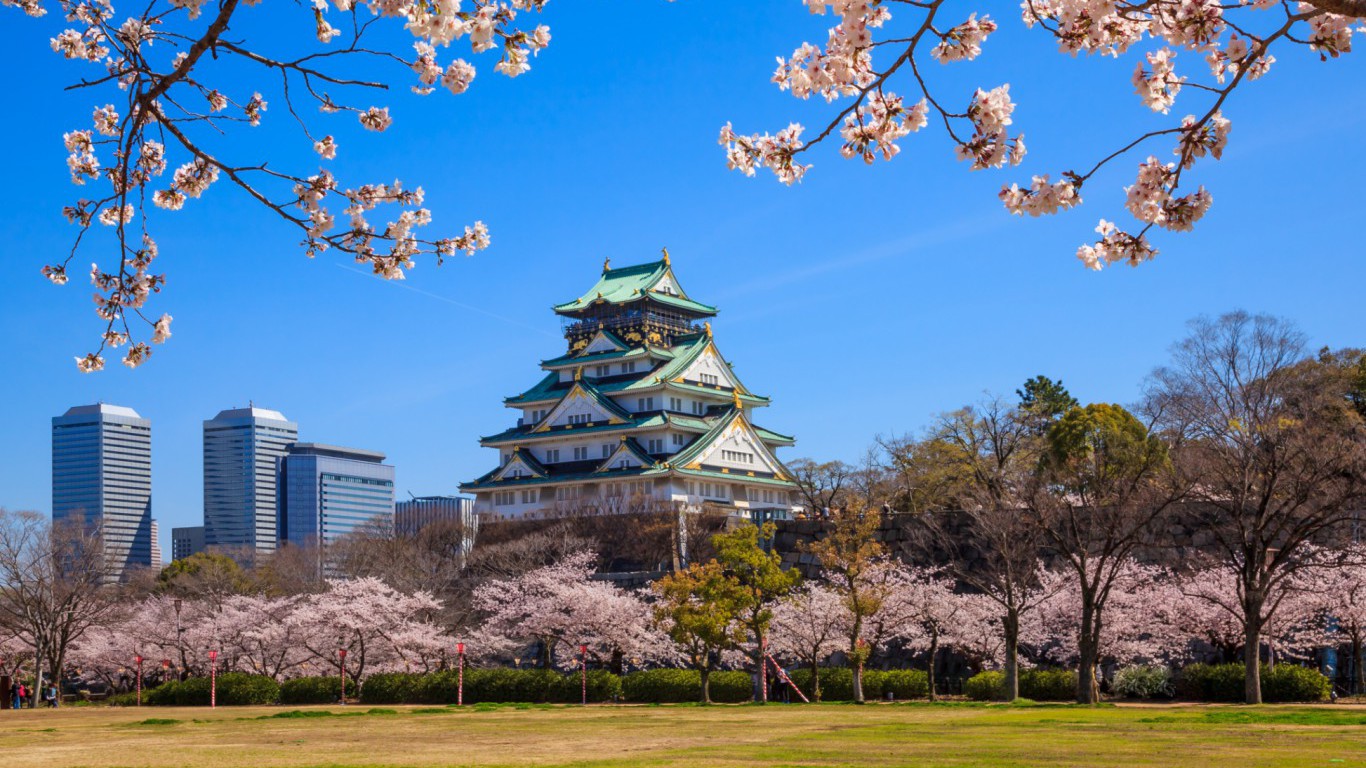
9. Japan
> 2016 GDP: $4.9 trillion
> Life expectancy: 84 years
> Gov’t debt as pct. of GDP: 238.1%
> Patent filings: 332 (per million residents)
The WEF’s Global Competitiveness Report rates Japan’s physical infrastructure as fourth best in the world. The report gives the country’s roads good marks, and Japan’s rail system ranks second in the world. The country has one of the best business supply network, with both a high quality and quantity of local suppliers.
Japan’s competitiveness has slipped recently, falling for three consecutive years from sixth place to ninth. Japan’s recent issues can be attributed to the Asian powerhouse’s recent economic woes, including a heavy deflationary period in 2016, as well as ongoing budgetary issues.

8. United Kingdom
> 2016 GDP: $2.6 trillion
> Life expectancy: 82 years
> Gov’t debt as pct. of GDP: 89.0%
> Patent filings: 99 (per million residents)
The United Kingdom dropped a single spot from its rank in last year’s Global Competitiveness Report, and it could drop even more in the future. The report did not factor in the country’s decision to leave the European Union, which “is likely to further undermine the country’s competitiveness,” according to the report. Currently, the U.K.’s biggest struggle is what the report calls its macroeconomic environment, particularly its substantial government debt. The federal government’s debt is equal to 89.0% of the nation’s GDP, which ranks 117th in the world.
The U.K. is one of the most technologically advanced countries in the world. It ranks fourth in technological readiness, or how quickly a nation can harness technology to boost productivity. Some 94.8% of the U.K. population uses the internet, a higher share than in all but a handful of other countries.

7. Sweden
> 2016 GDP: $511.4 trillion
> Life expectancy: 83 years
> Gov’t debt as pct. of GDP: 43.9%
> Patent filings: 318 (per million residents)
Sweden’s economy ranks as the seventh most competitive in the world and the most competitive among Nordic nations. Like each of best-ranked countries on this list, Sweden has an innovation-driven economy, meaning the country’s economy is bolstered by the newest technologies and companies’ second to none ability to adopt and integrate the latest innovations. The country boasts about 318 million patent filings for every million residents, the second most of any country in the world.
According to the WEF, tax rates, tax regulations, and restrictive labor regulations are among the largest hurdles Sweden’s economy faces in terms of global competitiveness.
[in-text-ad-2]

6. Hong Kong SAR
> 2016 GDP: $320.7 billion
> Life expectancy: 84 years
> Gov’t debt as pct. of GDP: 0.1%
> Patent filings: N/A
Hong Kong SAR surpassed several world powers to claim the sixth spot on the list, after ranking ninth in 2016. China’s special administrative region’s high ranking is largely attributable to its infrastructure, which ranks highest of any country on Earth. Located off the southern edge of China, Hong Kong has some of the highest quality road, port, railroad and air transport infrastructure worldwide.
Hong Kong also has the second most efficient market among all countries. The country’s lack of trade tariffs could help explain the nation’s status as a trade center. The amount of merchandise and commercial services imported to Hong Kong in 2016 was each worth nearly twice its GDP, as was the amount of goods exported.

5. Germany
> 2016 GDP: $3.5 trillion
> Life expectancy: 81 years
> Gov’t debt as pct. of GDP: 70.9%
> Patent filings: 219 (per million residents)
As the largest economy in Europe, Germany has long played an important role in the region’s politics and its economy. After the recent elections in September, Chancellor Angela Merkel failed to form a coalition government, raising concern among experts about widespread regional economic instability as a result.
Regardless of what happens in the German government, the country will certainly remain one of the most economically competitive. The country scores particularly well in the report in its capacity for innovation and sophistication of its businesses. As is the case in much of Europe, tax rates and regulations rank among the most problematic factors for doing business in Germany.
[in-text-ad]

4. Netherlands
> 2016 GDP: $771.2 billion
> Life expectancy: 82 years
> Gov’t debt as pct. of GDP: 64.6%
> Patent filings: 212 (per million residents)
Businesses need to be able to count on reliable infrastructure to thrive, and infrastructure in the Netherlands is nearly the best in the world. Only a handful of countries outrank the Netherlands in quality of roads, railroads, and airports — and with considerable coastline along the North Sea, no country has better ports than the Netherlands. In addition to infrastructure, the Netherlands also ranks among the five best countries in the world in health and school systems, higher education and training, goods market efficiency, technological readiness, and business sophistication.
Like many of Europe’s most competitive economies, the Netherland’s is hindered primarily by government regulations. According to the World Economic Forum, restrictive labor regulations, inefficient government bureaucracy, and tax rates are the three factors impeding business the most in the Netherlands.
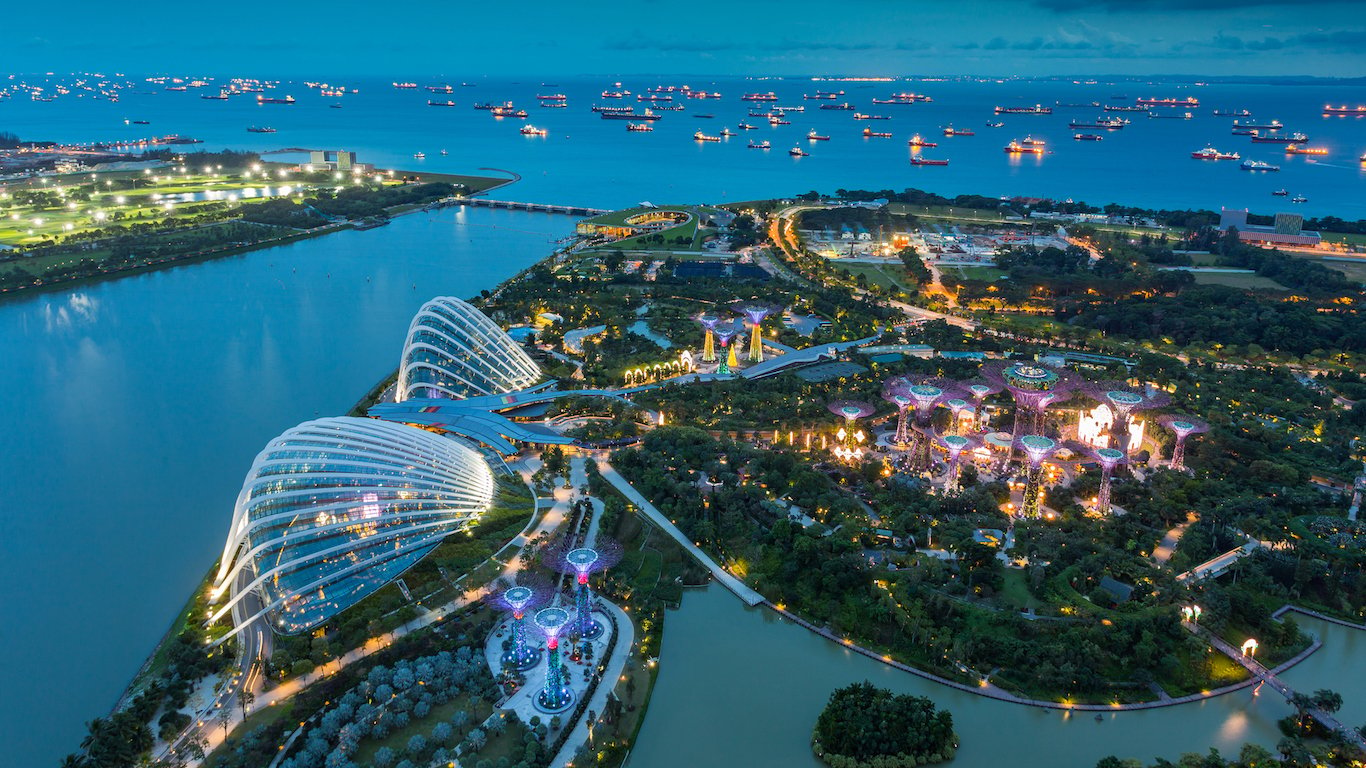
3. Singapore
> 2016 GDP: $297.0 billion
> Life expectancy: 83 years
> Gov’t debt as pct. of GDP: 103.2%
> Patent filings: 145 (per million residents)
Singapore’s economy is the third most competitive in the world and the most competitive in Asia. In broad terms, the country’s success is attributable to reliable infrastructure, an efficient labor market, and an effective public sector.
Singapore’s strengths in terms of economic competitiveness do not stop there. Driven in large part by best-in-the-world math and science education, in addition to widespread internet access in schools, Singapore outranks every other country in the quality of its higher education and training institutions. Additionally, unfettered by high trade tariffs or burdensome customs procedures, Singapore’s goods market is the most efficient in the world. Singapore’s $477 billion GDP is larger than some countries with populations many times larger.

2. United States
> 2016 GDP: $18.6 trillion
> Life expectancy: 79 years
> Gov’t debt as pct. of GDP: 105.2%
> Patent filings: 177 (per million residents)
While the United States ranks as the second most competitive economy in the world, it struggles with many social shortcomings. According to the report, the country ranks 29th overall in health and primary education, and falls behind 55 other countries in female participation in the labor force. The United States recently withdrew from the Paris Climate Accord, which could lead the country to fall further behind competitors in the development of renewable or environmentally friendly energy sources.
But while these factors and others could have long-term effects on the nation’s economic competitiveness, the United States remains the world’s largest economy and nearly the best in the world in important areas such as innovation, sophistication of business, size of market, and the efficiency of its financial markets.
[in-text-ad-2]

1. Switzerland
> 2016 GDP: $659.9 billion
> Life expectancy: 83 years
> Gov’t debt as pct. of GDP: 43.6%
> Patent filings: 300 (per million residents)
Yet again, Switzerland ranks as the most competitive economy in the world. This should be of no surprise, as the country has ranked at the top for at least six straight years. Switzerland is among the top 10 nations in nearly every pillar of the Global Competitiveness Index, but it is perhaps best at innovation. According to the WEF, companies in no country innovate as well as those in Switzerland. Switzerland has the greatest capacity for innovation, the highest quality research institutions, and its companies spend more on research and development than anywhere else in the world.
These innovative advantages are enhanced by a number of other factors. Swiss children grow up in the highest-quality education system in the world, and Switzerland’s overall infrastructure is second-to-none. The country also has the highest credit rating of any nation in the world.
The Worst Economies in the World
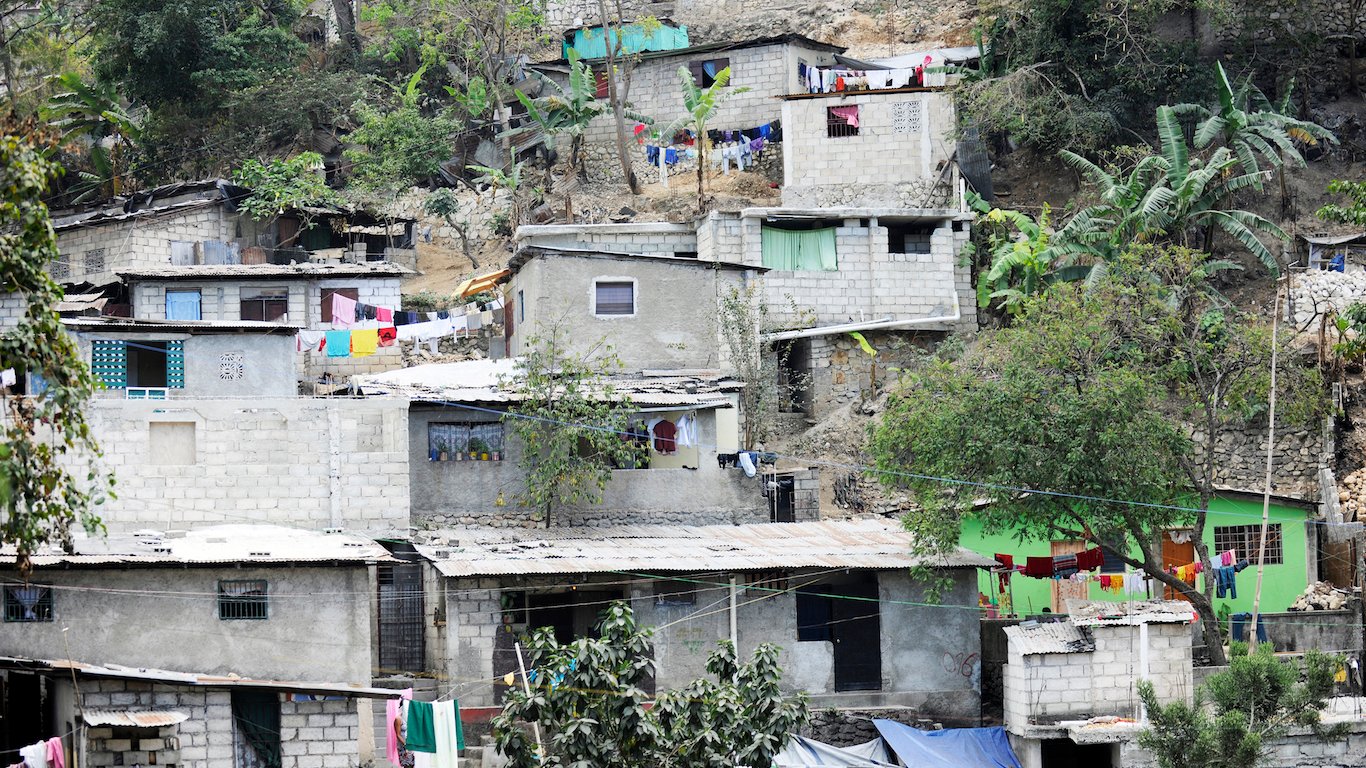
10. Haiti
> 2016 GDP: $8.3 billion
> Life expectancy: 63 years
> Gov’t debt as pct. of GDP: 30.2%
> Patent filings: 0 (per million residents)
President Donald Trump announced in November that the United States would suspend the temporary protected status it had granted to nearly 60,000 Haitian citizens that had been displaced by the country’s catastrophic earthquake in 2010. For Haiti, the poorest nation in the Western Hemisphere, this could mean a flood displaced residents returning when the grace period expires in July 2019.
Haiti ranks dead last, not just in the Americas but the entire world, in important areas such as the sophistication of its business and in innovation. Economic growth in advanced economies is driven by innovation and new technologies, but Haiti’s innovation is the worst among the 137 countries reviewed by the WEF based on measures like company research and development spending and the availability of scientists and engineers.
[in-text-ad]
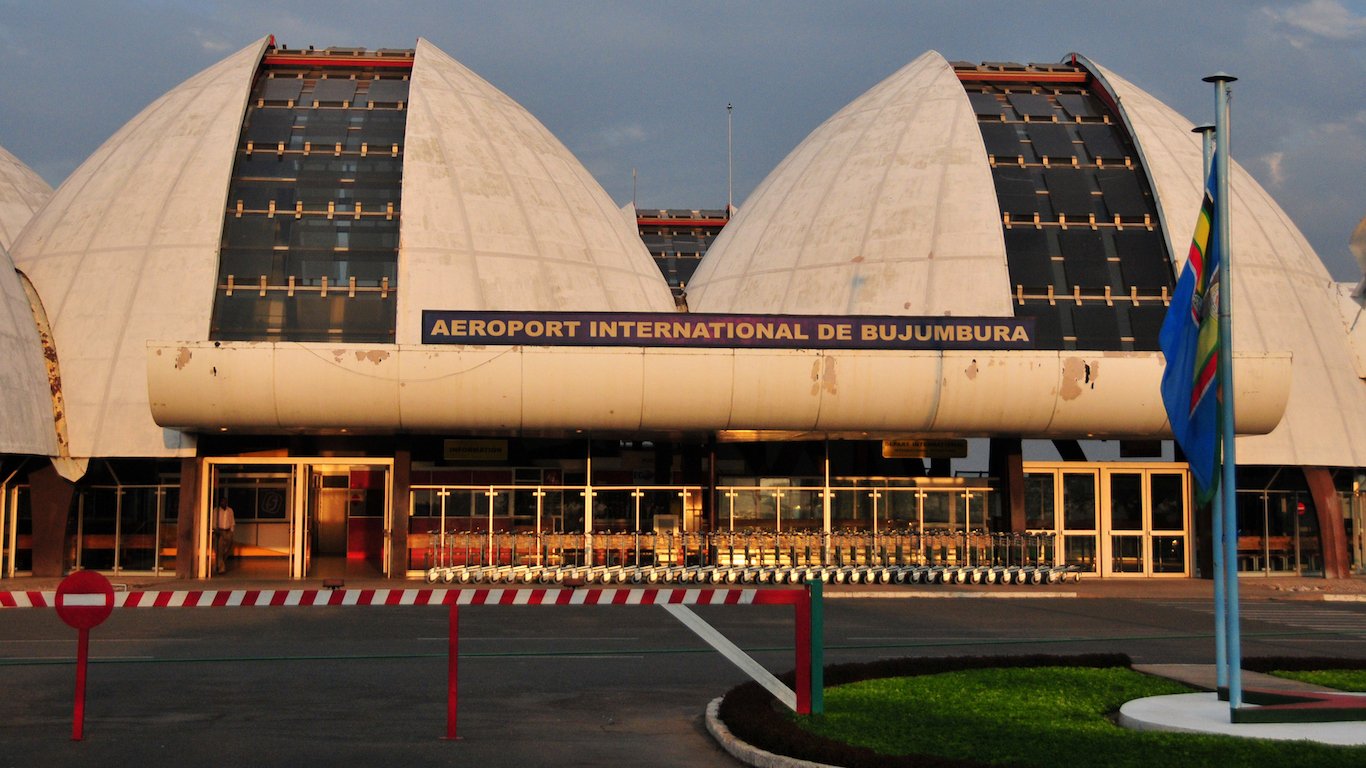
9. Burundi
> 2016 GDP: $3.1 billion
> Life expectancy: 57 years
> Gov’t debt as pct. of GDP: 46.1%
> Patent filings: 0 (per million residents)
With more and more companies taking the bulk of their business online, it is more important than ever to be up-to-date with technology. Unfortunately for Burundi, the nation is one of the least prepared to adapt to an increasingly connected world. Just 5.2% of its population has internet access, one of the lowest percentages in the world.
Burundi is one of the poorest countries in the world, and the lack of capital can severely hamstring businesses from developing and flourishing. The report ranked Burundi’s lack of access to financing as the most problematic factor for doing business in the country.
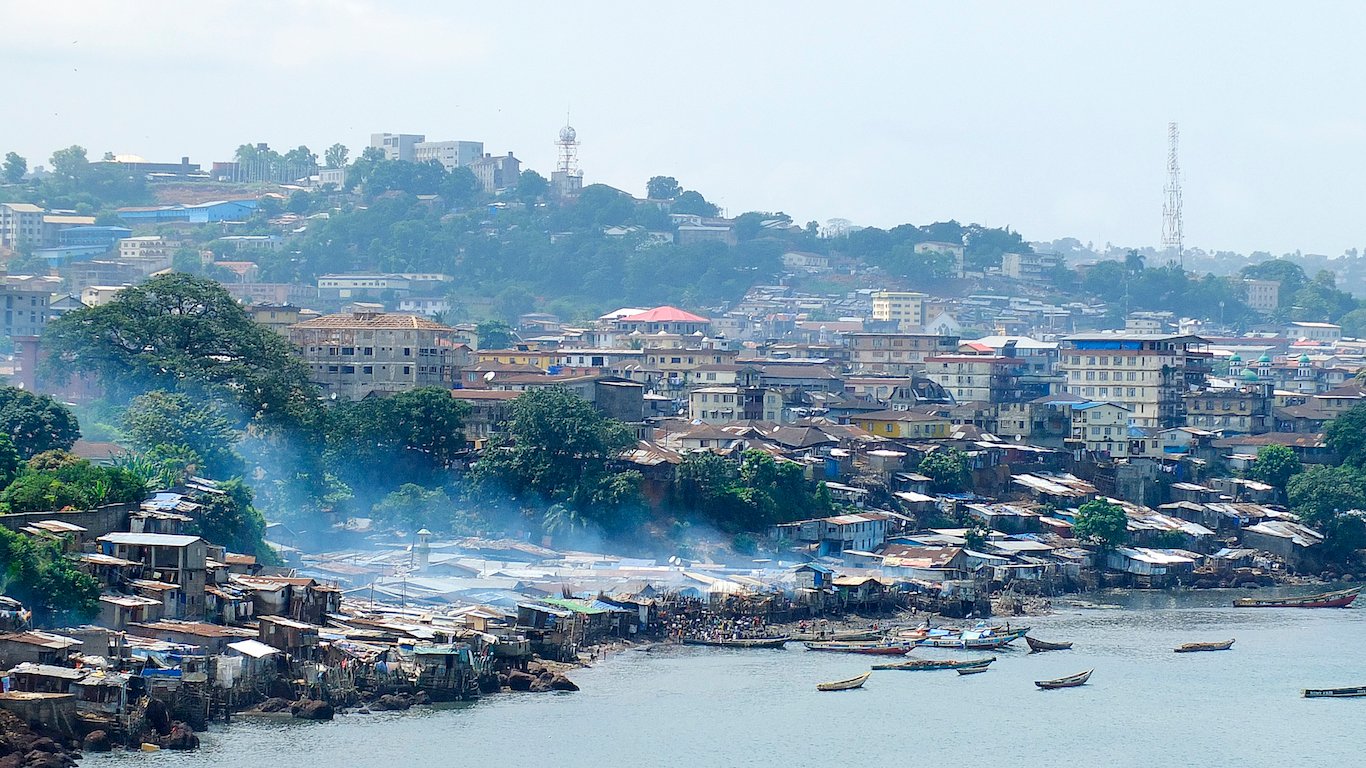
8. Sierra Leone
> 2016 GDP: $4.0 billion
> Life expectancy: 51 years
> Gov’t debt as pct. of GDP: 45.3%
> Patent filings: 0 (per million residents)
Sierra Leone’s is largely a resource-based economy that’s also driven in large part by unskilled labor. In order for economies like Sierra Leone’s to remain competitive, functional institutions, reliable infrastructure, and a healthy workforce with a basic education are necessities. However, the coastal west African nation ranks among the worst in the world in these measures. The country struggles with high rates of HIV and infant mortality, and at only 51 years, it has one of the lowest life expectancies in the world. The country also struggles with government corruption in inadequate access to financing and investment.
Like many struggling African economies, Sierra Leone’s growth has been stymied by conflict. The country emerged from a devastating civil war only 15 years ago, it also was one of the hardest-hit by the recent Ebola epidemic in West Africa.

7. Lesotho
> 2016 GDP: $2.3 billion
> Life expectancy: 54 years
> Gov’t debt as pct. of GDP: 49.7%
> Patent filings: 0 (per million residents)
Lesotho’s economic struggles can be partly attributed to the fact that a large percentage of its population simply is not healthy enough to contribute meaningfully to economic development. Lesotho is the worst ranked country in health and primary education. A quarter of the adult population has HIV/AIDS, the second highest share in the world. Lesotho also has one of the highest incidence rates of tuberculosis, and those diseases can have a huge negative impact on the economy.
Health is not the only major problem holding Burundi back. Businesses in the country have a harder time both finding and affording financial services than in any other country.
[in-text-ad-2]
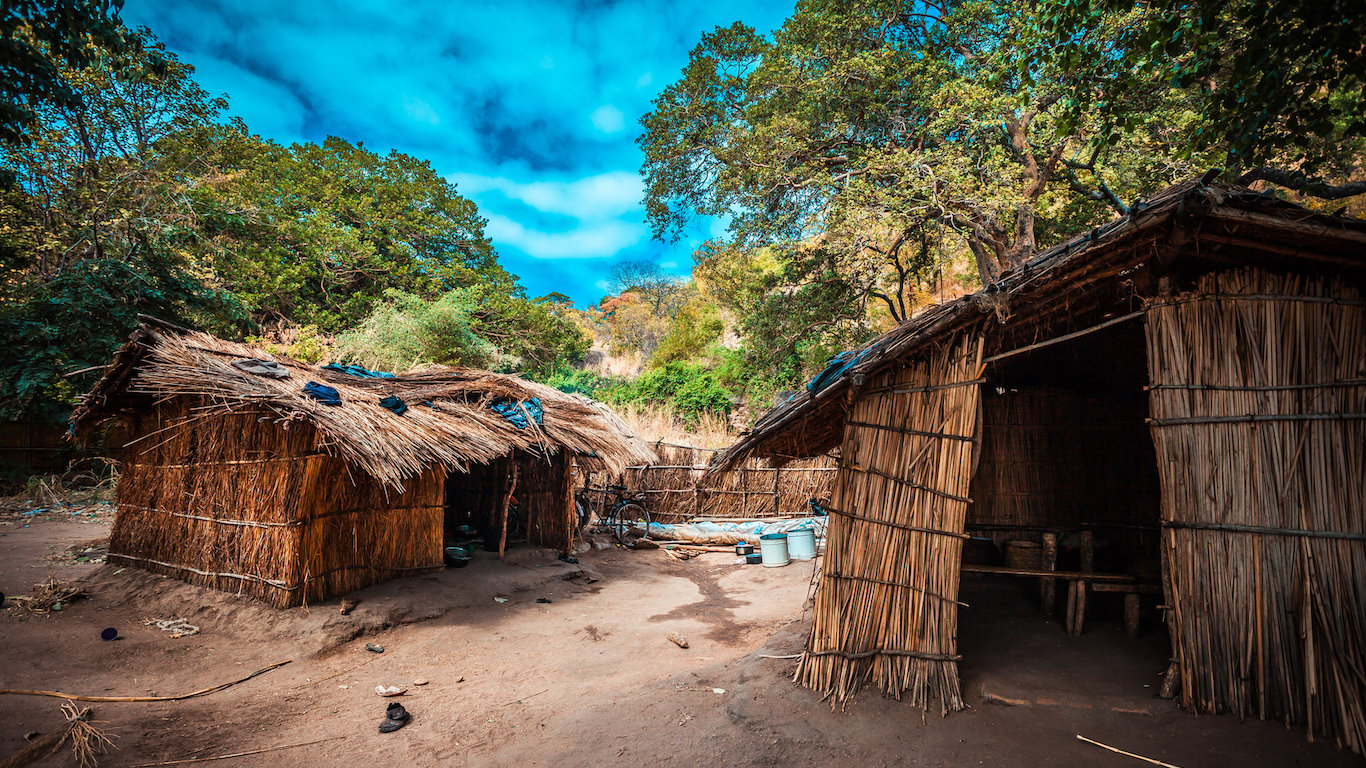
6. Malawi
> 2016 GDP: $5.5 billion
> Life expectancy: 63 years
> Gov’t debt as pct. of GDP: 61.1%
> Patent filings: 0 (per million residents)
Government corruption and poor communication and transportation infrastructure are among the most significant hurdles Malawi must clear to help develop its economy. Public trust of politicians in the country ranks among the lowest of any country in the world. Inefficient government spending, bribery, and favoritism in the decision making of government officials all partially explain why. Additionally, only about 40% of Malawi residents have cell phone subscriptions — the smallest share of any country considered — and virtually none have access to a fixed telephone line connection. The quality of the country’s transportation infrastructure is also among the worst in the world.
Like many African nations, Malawi struggles with HIV, the prevalence of which stymies economic development.

5. Mauritania
> 2016 GDP: $4.7 billion
> Life expectancy: 63 years
> Gov’t debt as pct. of GDP: 98.4%
> Patent filings: 0 (per million residents)
Education is a key factor in innovation, giving the next generation the tools they need to fully achieve their potential. Unfortunately, substandard education systems can also hold students back, which may be the case in Mauritania. The country has the lowest quality education system of all 137 ranked countries. It is also harder to find high quality professional training services in Mauritania than anywhere else.
Mauritania also has the least developed financial market. Businesses in the country have inadequate access to financing and investment, and the country’s securities exchanges are poorly regulated.
[in-text-ad]

4. Liberia
> 2016 GDP: $2.1 billion
> Life expectancy: 62 years
> Gov’t debt as pct. of GDP: 39.5%
> Patent filings: 0 (per million residents)
A serious outbreak of the deadly virus ebola ravaged West Africa in 2014 and 2015. The most deaths were in Liberia, where the outbreak is estimated to have taken an economic toll of hundreds of millions of dollars. Liberia, like much of sub-Saharan Africa, compares poorly to the rest of the world in most measures of global competitiveness. The oldest republic on the continent, it fares slightly better than some of its neighbors in measures of institutional stability and labor market efficiency.
However, Liberia falls behind nearly every nation on Earth in other measures, particularly in measures that relate to human capital. Its health infrastructure is nearly worst among nations measured in this report, and the country compares poorly in measures like quality of management, specialized training, and internet access in schools.
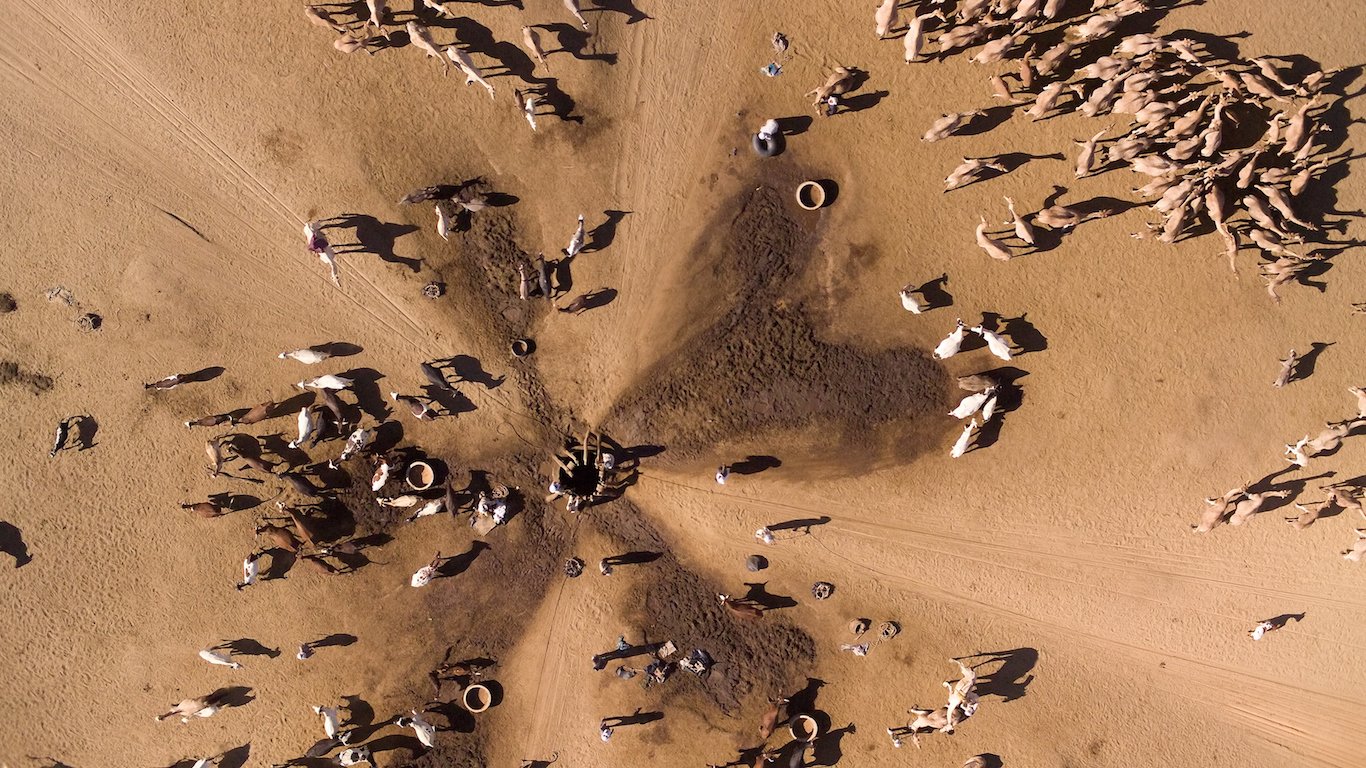
3. Chad
> 2016 GDP: $10.1 billion
> Life expectancy: 53 years
> Gov’t debt as pct. of GDP: 43.3%
> Patent filings: 0 (per million residents)
There are numerous factors that impact any struggling economy, and Chad is no different, but perhaps its biggest struggle is with technology. The African nation ranked dead last in technological readiness. Recent technological developments are almost never available in Chad and only 5.0% use the internet. Even in measures more relevant to a non-innovation economy, Chad ranks among the worst in the world for basic measures of quality of life such as life expectancy, infant mortality, basic education, and freedom from life-threatening disease.
The legal and administrative institutions in Chad can also set businesses up for failure, as the business regulatory framework is often seen as illegitimate. Bribery is believed to be more common in Chad than in any other country, and Chad’s judicial branch is one of the least independent worldwide.
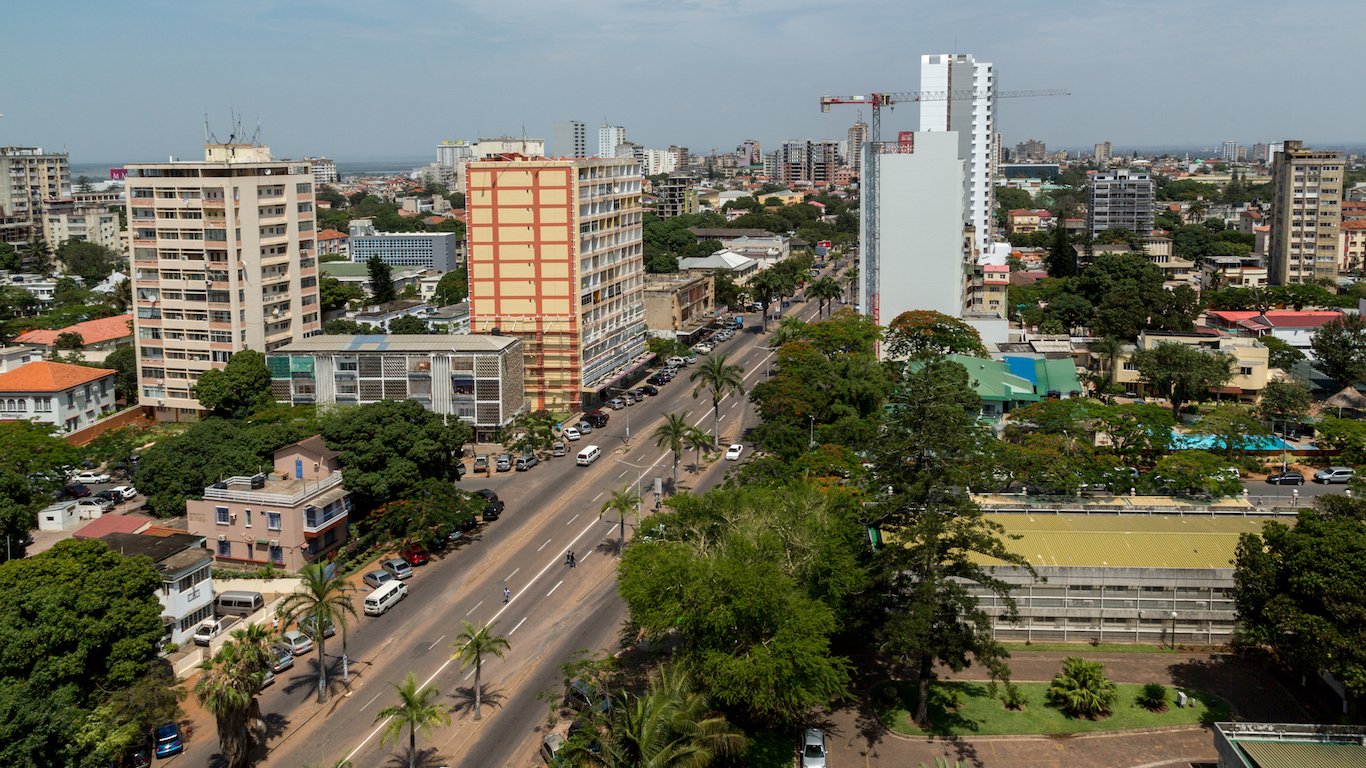
2. Mozambique
> 2016 GDP: $11.3 billion
> Life expectancy: 58 years
> Gov’t debt as pct. of GDP: 88.1%
> Patent filings: 0 (per million residents)
Mozambique’s economy is the least competitive in Africa and the second least competitive in the world, after only Yemen. Like many African countries, HIV is taking a considerable toll on the country’s population. Some 12.3% of adults in Mozambique are HIV positive, one of the highest rates of any country. Due in part to the prevalence of diseases like HIV, life expectancy at birth in Mozambique is only about 58 years, nearly the lowest in the world.
Unskilled labor and natural resources are the primary economic engines in Mozambique. In such factor-based economies, basic education is a necessity for economic growth. According to the World Economic Forum, no country has lower quality primary education system than Mozambique.
[in-text-ad-2]
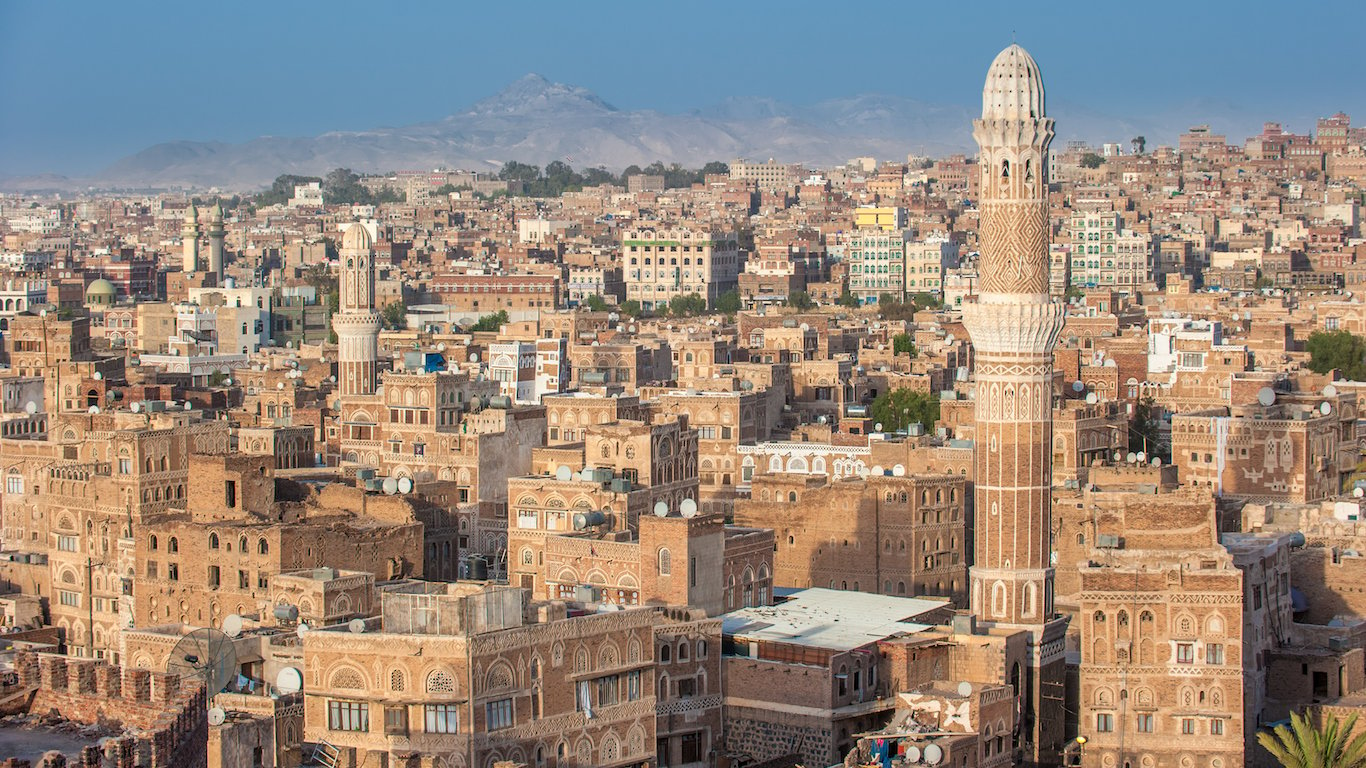
1. Yemen
> 2016 GDP: $27.3 billion
> Life expectancy: 65 years
> Gov’t debt as pct. of GDP: 66.7%
> Patent filings: 0 (per million residents)
With Yemen in the midst of a devastating civil war and on the brink of widespread famine, economic development has been rendered all but impossible. The country is ranked as the worst economy in the world for the second consecutive year.
Terrorism hurts businesses in Yemen to a greater extent than anywhere on Earth. Violence across the country makes it difficult to produce anything of value, so exports make up just 4.1% of Yemen’s GDP, the lowest percentage of any country.
The lack of food and prevalence of violence has made it difficult to help children in Yemen get an education. The quality of both primary and higher education in the country are among the lowest in the world. With an uneducated population and a civil war that is showing no signs of ending, Yemen’s economy will likely struggle to recover in the near future.
Detailed Findings & Methodology
The 10 most competitive economies in the world, as identified by the World Economic Forum, span three continents. Six are scattered through the U.K., Scandinavia, and Western Europe, three are in Asia, and the United States is the only country in the top 10 in North America.
Meanwhile, the world’s least competitive economies are mostly concentrated in sub-Saharan Africa. Of the 10 countries ranking lowest on WEF’s index, one is in the Caribbean, another in the Middle East, and the remaining eight in sub-Saharan Africa.
The economies of countries throughout the world, particularly those at opposite ends of the list, exist at different stages of development — and each development stage comes with its own unique set of needs.
The countries with economies trailing the rest of the world generally rely heavily on natural resources — often minerals — and unskilled labor. For such economies, health care, infrastructure, and primary education are among the most important factors for furthering economic development.
Many of the countries with the least competitive economies have considerable hurdles to clear before any lasting economic advancement can occur. For example, Sierra Leone is still reeling from a civil war that ended in 2002 as well as the 2014 Ebola outbreak. Other countries at the bottom of the list, like Yemen, are still struggling with ongoing civil wars and a constant terrorism threat that make economic development all but impossible.
Meanwhile, on the other end of the spectrum, the world’s most competitive economies are primarily fueled by innovation. In such countries, including the United States, emphasizing business sophistication and innovation capacity are critical to maintaining a competitive edge.
To identify the most and least competitive nations in the world, 24/7 Wall St. reviewed “The Global Competitiveness Report 2017-2018” from the World Economic Forum. The report uses an index consisting of 114 indicators organized into 12 pillars assessing the competitiveness of 137 countries. All GDP figures, including debt as a percentage of GDP, were provided to the WEF by the International Monetary Fund. Population figures also came from the IMF, and the number of patent applications came from the Organization for Economic Co-operation and Development. All data, unless otherwise specified, are from the most recent year available.
Finding a qualified financial advisor doesn’t have to be hard. SmartAsset’s free tool matches you with up to 3 fiduciary financial advisors in your area in 5 minutes. Each advisor has been vetted by SmartAsset and is held to a fiduciary standard to act in your best interests. If you’re ready to be matched with local advisors that can help you achieve your financial goals, get started now.
Thank you for reading! Have some feedback for us?
Contact the 24/7 Wall St. editorial team.